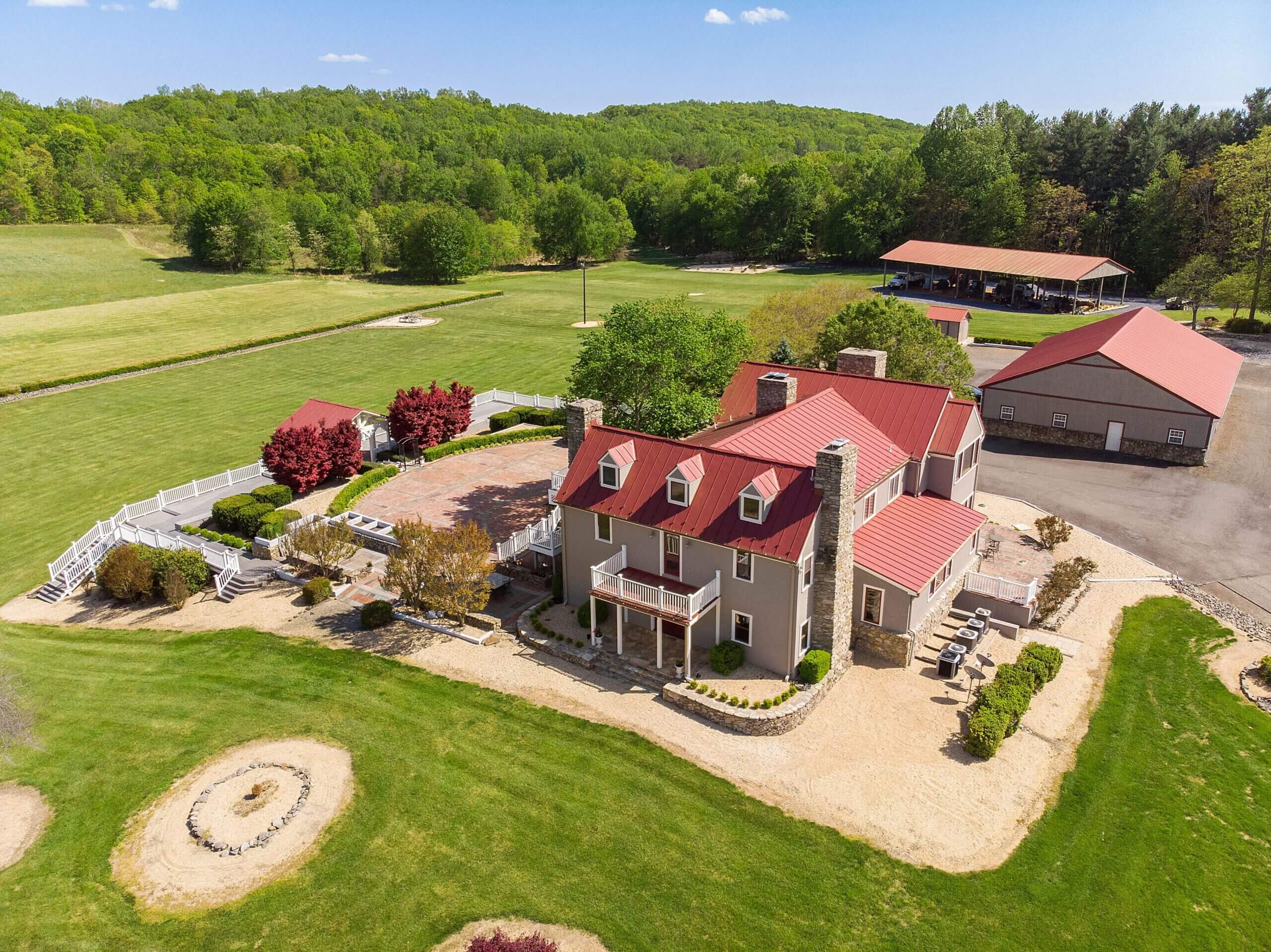BLOG
A New Crop Of Buyers is Entering the Market
Jessica Martin ● August 17, 2017

Have you ever considered living on a farm? Trends in the DC Metro lead heavily towards this being a normal question that many people have come to ask themselves. Maybe we wouldn’t jump right into owning a 100 acre farm in North Dakota, but we have been asking ourselves lately: what, exactly, is in the food we eat, and how do we buy it?
Numerous organic grocery stores have been springing up in the DC Metro area in the last five years, and they’re all doing fairly well in the market. What does this mean? For real estate it can mean a few things.
Correlation v. Causation
The National Association of Realtors recently released its 2017 National Housing Pulse survey. In this survey, it was discovered that in the recent market, buyers are willing to spend more than the previous year’s average price to own their own home. This means that prices of homes have increased and we’re still in a seller’s market, and if you sell your home, you’re more likely to have a stronger ROI now than you did, say, six years ago. Some have thought this means we’re in a new housing bubble that rivals the crash of 2008, but others argue this is the path the market should have taken originally. Had the crisis not occurred, we would still be on the same path we are now.
But what can buyers look for in a neighborhood to help determine a high ROI? Schools, parks, commuter systems, and entertainment are all high priorities, but this survey suggests we should begin to look elsewhere – grocery stores; specifically grocery stores boasting high quality and/or organic products. The US organic industry saw sales of $43.3 billion in 2015 – up 11% from 2014. The overall food market only gained 3% (Institute, 2016).
The average home value of those nearby a Trader Joe’s is $595,288. This is up from Whole Foods’ $531,103, and Aldi sitting at $211,855. Trader Joe’s had the highest price appreciation over a five year period by about 65,000 dollars (Mcpherson, 2017). This begs the question – is it because Trader Joe’s is here that the median home price increased, or is it because the communities were already being developed with “middle class standards” that Trader Joe’s decided to set up shop in these areas? Another study would need to be performed to determine causation v. correlation. It could be that Trader Joe’s and Whole Foods are able to analyze market trends, build gentrification heavy community, and, from there, that’s where we see profit margins grow. 16% of US residents say that healthy food is not available in their communities, and “25 million to 30 million US residents, which is equal to 9% of the total population, are estimated to live in places that do not adequately offer access to healthy food retailers” (grocery stores/retailers) (Institute, 2016).
A Different Kind Of Community
All over the country, and right in our backyard, there’s a community trend. Communities of homes built around a working farm, otherwise known as an “agrihood”. An agrihood, though, isn’t to be confused with another kind of community I will discuss: the food-centric residential developments (Trapasso, 2017). Right now, in Aldie, Virginia, about 40 minutes outside of DC, and just west of Dulles International Airport, there’s a 4,000 acre agrihood in full bloom around Willowsford Farm. These communities offer the members a chance to volunteer at the farm, pick their own fruits and vegetables for an upfront cost (in some cases eggs, meat, and milk are included), and learn about how to care for the plants. Agrihood’s stem from a newly recognized idea – we want to know what is in our food and how it’s cared for, how we can help the Earth, and better access to healthy food. Let’s not forget that many studies find as much as a 15 to 30% increase in property ROI adjacent to parks and/or open space (Institute, 2016, p. 22).
Communities like the one in Aldie, Virginia, are an investment into you and your family’s future, and thus, they do not come with a cheap price tag. As Eric quotes Warren Buffett – Price is what you pay, value is what you get – this holds true for these communities. It’s a different lifestyle than those of us who grew up knowing suburban and downtown living are used to. For those that take the risk, the knowledge of knowing where some of your food is coming from (it’s growing right down the block), of the trails and outdoor living in your backyard, and the sense of community that gardening together evokes, makes the change and the slightly longer commute well worth it. It is your health, after all.
“Developer-supported agriculture is especially powerful in that it can create access to land and capital, while also serving to train young farmers to grow both food and community.”
Daron “Farmer D” Joffe, Director of Agricultural Innovation and Development, The Leichtag Foundation, and Founding Director, Coastal Roots Farm (Institute, 2016, p. 14)
In a small community in Mt. Rainier, two green-conscious developers, Jessica Pitts and John Miller of Flywheel Development, took on a challenging project – turning a small plot of land into four Passive townhomes. A passive-house standard, based in Germany, focuses on low energy use, and the test to pass as a passive-house is so strict, only “about 50 US buildings carry the certification.” (Popkin, 2017) These townhomes feature air-tight seals, LED light technology, minimalistic designs, solar panels, sheets of exterior insulation, energy-recovery ventilators, green roofs, and permeable driveways. A passive-house is designed to lower energy bills by 80% or more compared to the standard house (Popkin, 2017)! In the future, and now, it seems, that we’re heading towards an environmentally friendly and green-conscious home buyer, willing to spend a little extra money for a higher ROI in the long term. In fact, Flywheel is currently competing for a passive-house apartment project in DC with another passive-house builder.
Developments in downtown areas can, and are, implementing farming, garden, and park areas in creative ways. Rooftop gardens, parks on top of parking garages, and community gardens support green living in a downtown atmosphere. 35% of all US households in 2013 were growing food at home or in community gardens, a 17% increase from 2008 (Institute, 2016, p. 20).
Conclusion
Environmentally conscious individuals entering the housing market are changing the standard. Real estate trends are turning toward green living, healthy eating, and open spaces. As the interest for green-friendly homes continues to grow, so will investment opportunities, and the DC Metro area is on the forefront of environmental innovation.
Comment below and subscribe to our blog!
References
Institute, U. L. (2016). Cultivating Development. 16. Retrieved from http://uli.org/wp-content/uploads/ULI-Documents/Cultivating-Development-Trends-and-Opportunities-at-the-Intersection-of-Food-and-Real-Estate.pdf
Mcpherson, M. (2017, August 3). Which of these grocery stores is best for real estate? Retrieved from https://www.inman.com/2017/08/03/which-of-these-grocery-stores-is-best-for-real-estate/
Popkin, G. (2017, May 18). Can expensive, ultra-green homes sell in a gritty suburban Maryland town? Washington Post. Retrieved from https://www.washingtonpost.com/lifestyle/magazine/can-expensive-ultra-green-homes-sell-in-a-gritty-suburban-maryland-town/2017/05/17/753f1edc-2443-11e7-bb9d-8cd6118e1409_story.html?utm_term=.b1e5d71c9079
Trapasso, C. (2017, August 9). Seeds of a New Community: Farm Living Takes Root in the Suburbs. Realtor.com, p. 1. Retrieved from http://www.realtor.com/news/trends/agrihoods-farm-living-in-suburbs/
{{cta(‘116ca23c-39fc-4fbf-b747-a53828d67d77’)}}




